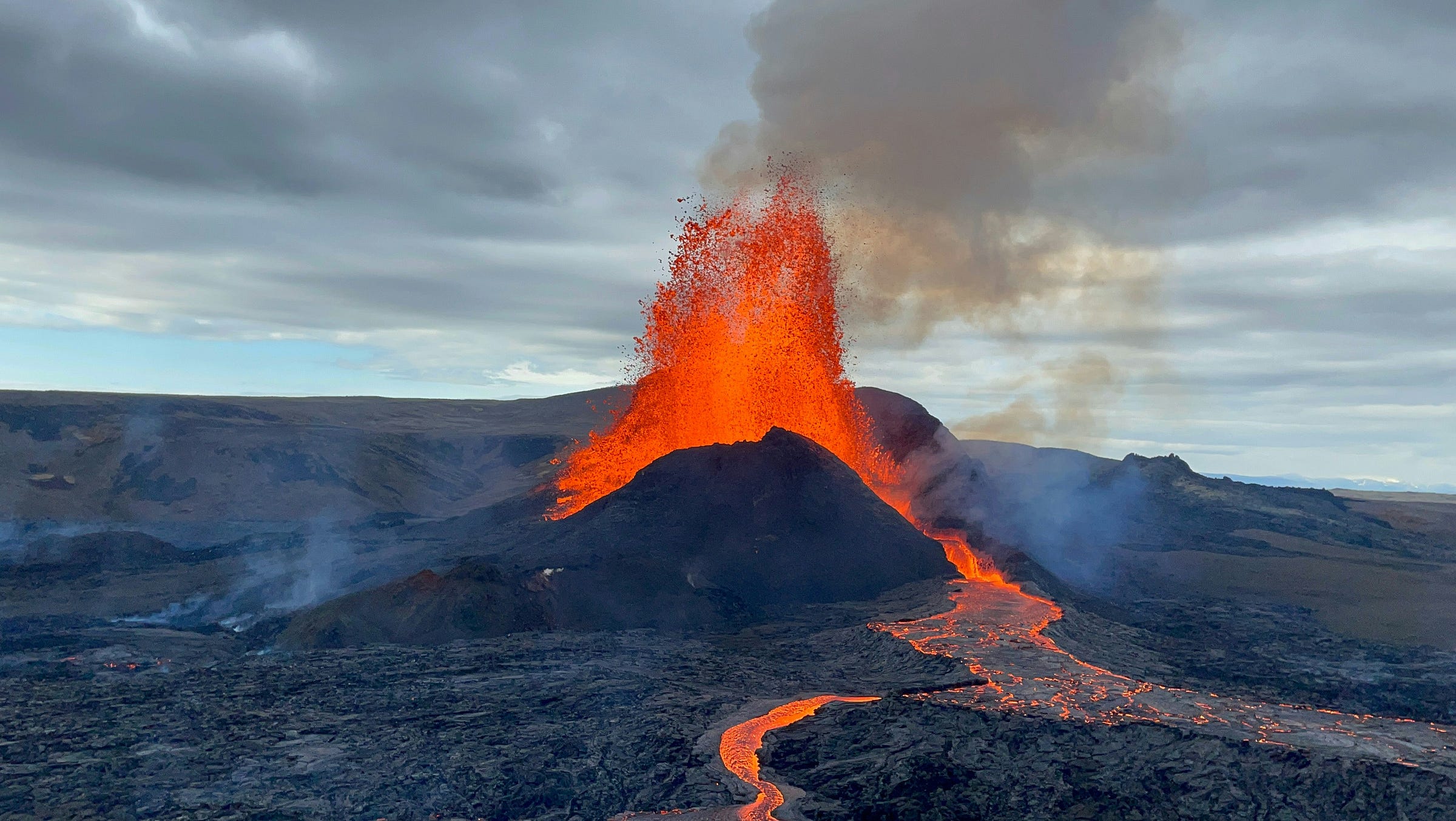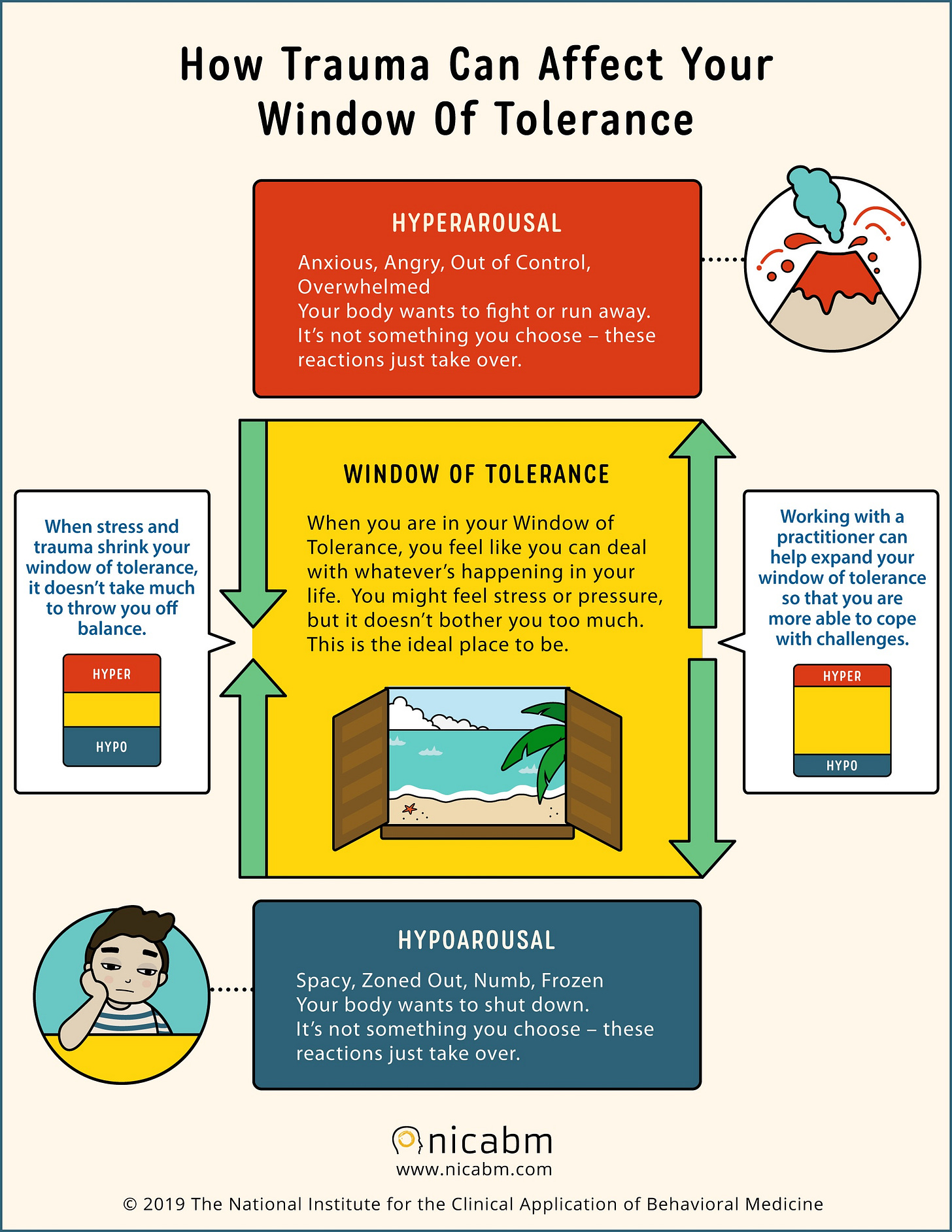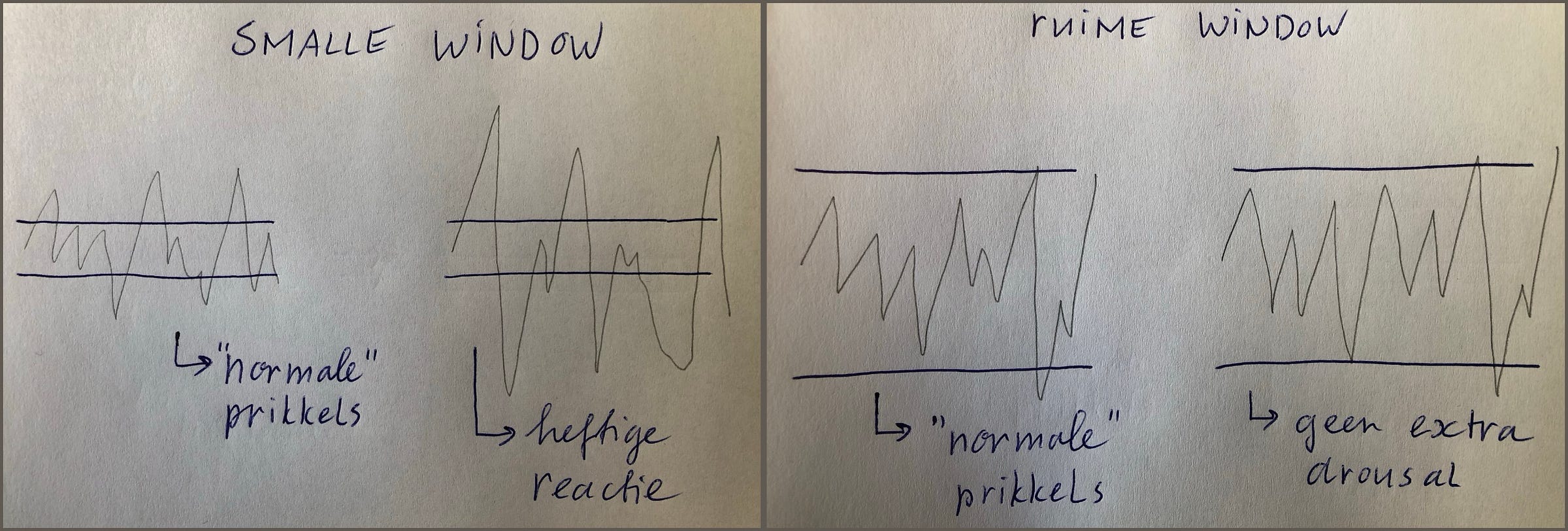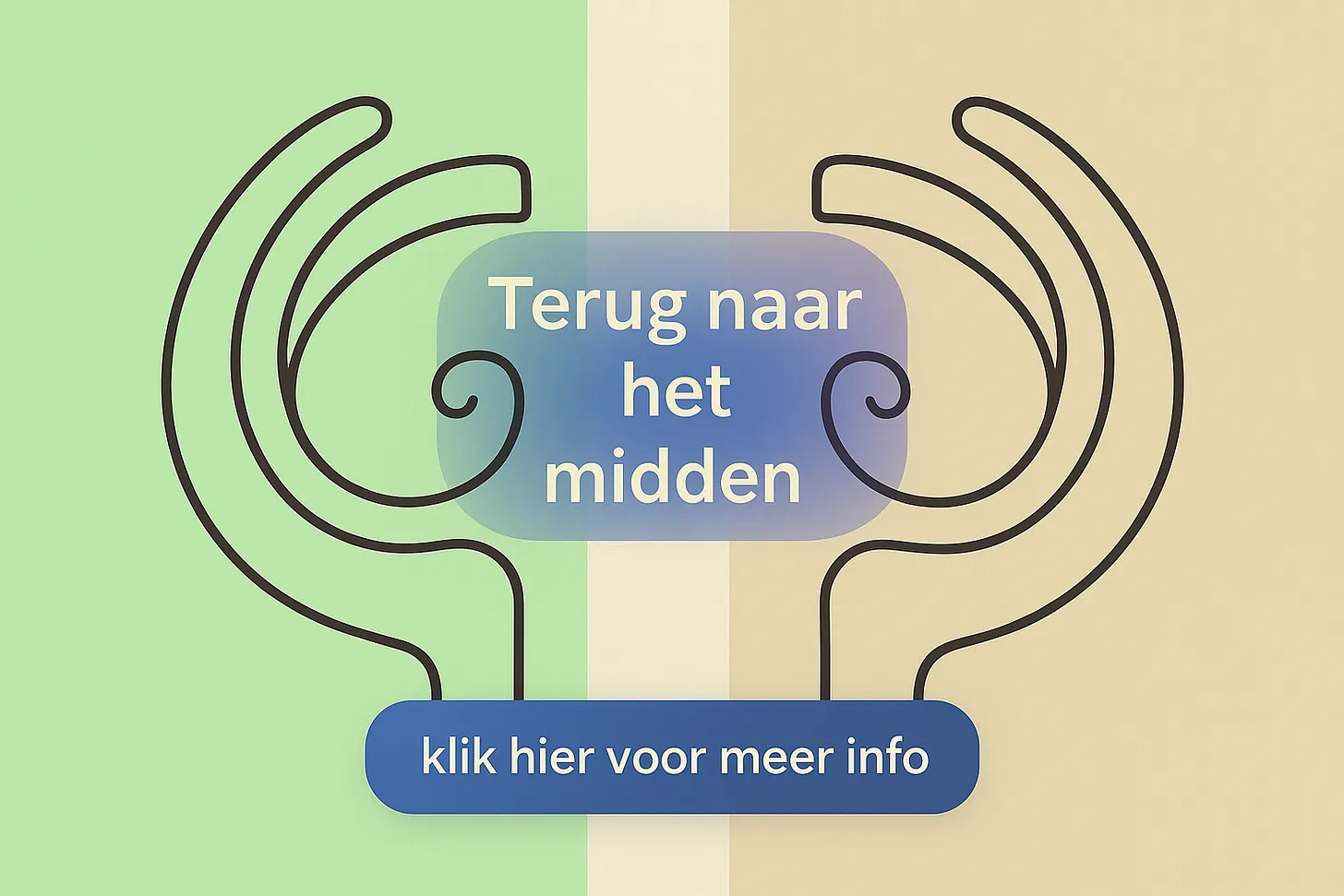GHIA - When Your Nervous System Is Always on High Alert
A Compassionate Guide to Understanding Global High Intensity Activation

A Nervous System That Never Rests
Imagine this: Marieke is doing an ordinary household chore, but inside she feels a lot of restlessness. Her muscles are tense without her knowing why. Her thoughts race faster than she’d like. It’s as if Marieke’s body and mind never truly settle, as if there’s an alarm going off somewhere that she can’t turn off.
Or take Joost, who has been sitting on the couch for weeks when he really should be doing all sorts of things. He feels paralyzed, as if his body has become heavy as lead. Even cleaning up the dishes feels like an insurmountable mountain. Deep down he knows there are things that need to be done, but his body seems to be stuck in ‘off’ mode. Yet there’s also that undercurrent of restlessness in him, that tension he feels like a constant hum in the background. It’s as if his system is simultaneously pressing both the brake and the gas pedal.
These are stories of GHIA – Global High Intensity Activation. The stories show that GHIA can manifest very differently: sometimes as hyperactivity (as with Marieke), sometimes as a kind of freezing or collapse (as with Joost). Both of these states can alternate within a person from day to day, week to week, or month to month, but that underlying tension that never goes away is always there.
GHIA
GHIA is a term that originated within Somatic Experiencing® (SE™) and is mainly used there, but the pattern is also recognized by other body-oriented therapists1. It is used to describe a nervous system that is chronically on high alert. This is not a free choice of the owner of that nervous system, but because the body learned long ago that the world is not safe and never unlearned that lesson.
GHIA usually develops very early in life. Sometimes during pregnancy, around birth, or in the first years of life. It often involves events we have no conscious memory of, but which affected our—still undeveloped and therefore vulnerable—nervous system so deeply that it remained calibrated in a permanent state of alertness.
A GHIA nervous system is either fully ‘on’ or completely ‘off’; there is hardly any middle ground. Even when someone is ‘switched off,’ there is still some degree of activation in the system. This can feel like buzzing or like static electricity.
Sometimes GHIA is present under the radar for a very long time and the symptoms suddenly manifest, for example after a loss, accident, illness, or infection. The metaphor of the house of cards collapsing then applies.
Interlude – Why GHIA at all?
A reasonable question: if the term GHIA isn’t used often, if no doctor can make a diagnosis of GHIA (GHIA is not a diagnosis after all2) and it doesn’t help you with the health insurance company or the occupational or disability physician either, then why are we even talking about GHIA? Why not just leave it to SE therapists, who apparently do find it useful?
A Brief History
I met Saskia Ebus, a former neurologist, therapist, and someone with lived experience of GHIA—which she didn’t recognize as such for a long time—during the training to become an SE practitioner.3 Saskia was still in her recovery process from a severe burnout and depression, which brought her GHIA to light. During the training weeks, I provided a half-hour Qigong class every morning for the entire group and the supervising team. This was well received, also by Saskia with her above-average sensitive nervous system.
During a walk in a break, we talked about GHIA and the possible positive effect of Qigong on it. At the end of the conversation, our joint conclusion was that there are probably a lot of people with a nervous system that carries GHIA and who don’t know it.
Partly as a result of Saskia’s experiences with taking weekly Qigong classes with me—which she also wrote an article about—we decided on an experiment: we made one call on LinkedIn, in which we described GHIA and invited people who recognized themselves in the description to join an online Qigong class. Without further effort, we had 60 interested people within two weeks, 30 of whom attended the online class.
Together with how these classes went the following year (see further on), this was enough for us to conclude that GHIA needs and ‘deserves’ more awareness. At the end of the article, I’ll tell you more about how the participants, Saskia, and I experienced that year.
So: Why GHIA at all?
Because there is collectively insufficient knowledge and insight—and therefore also insufficient understanding for the people it concerns—about the consequences of severe stress in early life. The fact that these consequences can be very diverse doesn’t make things easier.
Fortunately, the growing knowledge of embryonic development, maturation, and functioning of our autonomic nervous system provides more and more guidance, but there is still a long way to go.
Running or Standing Still, but Rarely in the Middle
Saskia Ebus describes how it can feel for her: “It feels like bees buzzing in your head, like a constant alarm is going off. Your arms and legs can feel stiff on the outside, while inside there’s so much energy that you could almost burst apart. Your breath feels constricted, as if you don’t dare breathe in life.
In your belly or chest, restless little birds flutter that just won’t settle down. They immediately take flight again at the slightest thing. It’s an inner restlessness that sometimes makes you long for stillness, but sometimes also specifically for more movement, more doing, more achieving.”4
People with GHIA have very diverse lives in which they sometimes functioned at a high level, or sometimes had that potential but never found the energy. Functioning at a high level with a nervous system that carries GHIA costs even more energy than ‘normal,’ because the nervous system never goes into rest mode. It’s like running a marathon while others are taking a walk. But yes, if you’re not used to anything else, you think that’s how it’s supposed to be, until the proverbial man with the hammer comes...
The Hidden Power of Sensitivity
What stands out is that people with GHIA are often particularly sensitive, creative, and spiritually inclined. They feel more and often have a rich inner world. These characteristics are sometimes side effects of early trauma and sometimes gifts, but they can also mean that the nervous system has to process more stimuli than it can handle.
Dr. Raja Selvam, one of the pioneers in working with GHIA, explains that people with this pattern are often very spiritual because they never ‘came into their body’ properly. The body doesn’t feel safe, so the mind withdraws to more subtle dimensions. This can yield beautiful insights, but it also means that healing must primarily happen through the body.
GHIA and Medical Diagnoses
The diversity of manifestations, complaints, and symptoms with GHIA doesn’t make it any easier to describe GHIA precisely. Many people who carry GHIA have been given labels such as fibromyalgia, chronic fatigue, persistent physical symptoms, various pain syndromes, and a whole host of medically unclear diagnoses, not to mention ADHD, depression, or bipolar disorder5.
That’s why many people don’t know that their nervous system carries GHIA. With a nervous system that doesn’t carry GHIA, the system responds to circumstances and can recover afterward. With GHIA, the system is always on high alert, regardless of circumstances. It never learned what rest feels like.
The Long Road Home in Your Own Body
Healing from GHIA is not a short walk; it’s a marathon walk that can take a long time. Saskia Ebus shares honestly that her own recovery process has been going on for seven years and is still ongoing. For some, like trauma therapist Rosalie Corame, it took until she was 61 before she finally felt really good and secure.
Monique Timmermans, co-founder of Mad in The Netherlands, describes her own journey with GHIA as a continuous voyage of discovery. By looking at her pain with curiosity and approaching herself with compassion, she manages to make negative feelings less important. She approaches finding solutions like an inner expedition: what can breathing achieve? How does it feel to float in water? What does music do to her nervous system?
With GHIA, the pattern is so deep and so embedded in your nervous system that it cannot be changed quickly in the short or medium term. It requires a different approach than traditional therapy. It’s not about analyzing what’s wrong and ‘unleashing’ a treatment plan on it, but about very slowly and gently guiding your nervous system toward more rest and regulation.
Discharge Can Trigger Activation
The beautiful thing is that our body does want to heal. Just as animals in the wild know how to discharge intense energy from survival behavior by trembling and shaking, we too are equipped with these regulatory mechanisms. But with humans, and especially with people with GHIA, this process requires much more time, patience, and safety. After all: any form of arousal, including discharge, can activate the nervous system again.
In terms of the “Window of Tolerance,” a concept by Dr. Dan Siegel, we can say that people whose nervous system carries GHIA have a very narrow window. There’s a clear infographic on NICABM’s informative website:
To clarify how it works with GHIA, I made two drawings. On the left, you see how with a narrow Window of Tolerance, stimuli quickly become too much and also lead to a hefty reaction from the nervous system. The right half shows that a nervous system without GHIA can firstly handle more stimuli and secondly has no intense lingering effect.
Someone with GHIA often only needs a small trigger to shoot out of the window or out of the middle. A trigger can be anything: relational, a look, a sentence, physical (illness or pain), an event that wouldn’t be a problem for people without GHIA. And shooting out of the middle usually means shooting far out of the middle.
A New Story About Rest
The goal of healing with GHIA is not to get your old, busy life back. That often just doesn’t work anymore, Saskia Ebus honestly acknowledges. The goal is something else, and perhaps more valuable: slowly learning to know moments of real rest. Not the rest of exhaustion, but the rest of a nervous system that begins to feel safe.
Saskia calls it ‘pottering around’—being, walking around, and working while you become more and more grounded in your body, grounded on the earth, grounded in your house and in your life. Moving calmly, thinking calmly. A state of being that she had never known before, and that she is still discovering.
Recovery with GHIA usually doesn’t mean ‘cured’ in the traditional sense. It means rather learning to live with a sensitive nervous system in a way that works. It means periods of more rest alternating with moments of appropriate activity. It means accepting that this is a long journey, with progress and sometimes setbacks.
An Invitation to Self-Compassion
If you recognize yourself in this story, remember this: your nervous system once tried to protect you. It did its best in circumstances that were overwhelming. That attempt at protection has stuck around like an old, familiar, but now no longer appropriate coat. That’s not a matter of guilt or unwillingness, but is related to the amount of stress the nervous system had to process, as well as the fact that the nervous system was still immature. That makes the imprint even stronger.
With the right guidance, you can slowly learn to take off that coat. You can offer your nervous system new experiences of safety, of rest, of connection. It’s a journey that requires courage, but also a journey that brings you closer to yourself than you’ve ever been.
Movement as Medicine, Rest as Balm
For people with GHIA, movement is important, but it must be the right kind of movement. Not movement that adds more stress, but movement that calms and nourishes the nervous system. Tai Chi and Qigong are good examples of this. These ancient movement forms work directly with the energy in your body and teach your nervous system different rhythms. You might well call Qigong mindfulness in movement. In the GHIA Qigong classes (see further on), we add an extra touch of gentleness.
Honesty compels me to say that not every form of Qigong is suitable for GHIA and not every Qigong teacher has knowledge of the nervous system. The same definitely applies to yoga. I once spoke with someone living in a body that carries GHIA, who had participated in a trauma-sensitive yoga class by a very well-known teacher, and who was completely dysregulated as a result. Too intense stretches, which caused the body to become seriously overstimulated and alarmed. So always go for an introductory class, start very calmly, and see how things go.
The Power of the Right Connection
One of the most important insights from body-oriented trauma work is that healing happens in relationship. For people with GHIA, finding the right support can be quite a challenge, but when it’s found, good steps can be taken. Perhaps a qualified Somatic Experiencing, Sensorimotor psychotherapy, or other body-oriented therapist who understands how your nervous system works.
Unfortunately, many people with GHIA cannot afford a therapeutic trajectory that lasts longer than the health insurer covers. That’s why the awareness we want to bring to GHIA is important. But it’s not only for this reason that Saskia Ebus and I continued with the weekly online classes for people with GHIA. We noticed quite quickly that the peer contact in our online group was very helpful. People who understand and respect the sensitivity and irritability. People with whom you don’t have to explain why you get tired from crowds, why you need a lot of time to recover from stimuli, why you sometimes just need to be alone, despite the fact that you actually also want connection.
Terugnaarhetmidden.nl
So Saskia and I came to the conclusion to give our weekly online classes and gradually became more and more convinced of their importance. We decided to set up a Substack for it and that became terugnaarhetmidden.nl. A name that participants recognize themselves in.
We teach on Tuesday mornings. Key elements are:
learning to move with gentleness;
practicing mindfulness in movement, so that participants can learn to distinguish between stilling and freezing, and also between being active and becoming activated. A nervous system that carries GHIA can quickly become confused when stilling and becoming active;
learning to deal more healthily with boundaries;
learning to choose to regulate the amount of stimuli we offer;
offering exercises that participants can also apply themselves, such as consciously feeling your feet on the ground, gentle self-touch, wrapping yourself in a warm blanket;
being together for a bit after class, where there is space to share something, for a question, or just to be silent together.
In addition to the fact that participants are indeed learning to take better care of their nervous system and are less quickly overwhelmed6, I in turn have learned a lot from the participants. For example, I have come to appreciate the Qigong exercises even more and I have also come to trust the value of compassion even more.
Want to Know More About GHIA?
There are possibilities for support and guidance. Two excellent starting points, although in Dutch, are:
Of course the website terugnaarhetmidden.nl. Here Saskia and I offer weekly online classes, specifically for people with GHIA. There is a page where interested people can take a look behind the scenes.
Mad in the Netherlands has compiled a very informative and comprehensive quarterly magazine on this subject.
If you want to search for a Somatic Experiencing therapist in your area, check this page of SE-Nederland.
Thanks ...
...to all the people with GHIA who gave and give their trust to move in the online Qigong group and to go on a voyage of discovery.
...to Saskia for the collaboration and proofreading of this article.
This article is a part of the Relaxicon on RelaxMore.net.
If you found this article worth reading and (not yet) feel like getting a paid subscription, you can always treat me to a cappuccino!
Rosalie Corame notes that “Neither SE or NARM seems to do a great job of preparing practitioners for GHIA-clients” and that “ISP – Integral Somatic Psychology – can potentially be a great resource for GHIA people but again it depends on the specific practitioner”. A NARM Master Practitioner writes that she learned about GHIA from SE training and now uses it in her NARM-oriented practice.
All sources confirm that “Global High Intensity Activation is a label used in the Somatic Experiencing world to refer to the nervous system state of certain clients”. So it is originally—and remains primarily—an SE term.
But what is it then? GHIA can (for now) be considered a descriptive term for many different presentations, complaints, and symptoms that have an oversensitive nervous system underlying them. ‘Clinical picture’ or ‘condition state’ is in my opinion the most appropriate phrase.
GHIA is not in the DSM-5 or ICD-11, is not an officially recognized medical diagnosis, is not a psychiatric disorder, and doctors cannot “diagnose” it in the formal sense.
There is a concept of “syndromal physiology” within SE, which describes “an overall body and nervous system state that has the tendency or possibility to develop into one or more medical syndromes, or where those medical syndromes are already present”.
Examples include fibromyalgia, chronic fatigue syndrome, migraine, and many others. People with GHIA often have these kinds of difficult-to-define physical complaints.
The SE training does not train you to become a therapist, but is a so-called additional training. You learn and train knowledge and skills that you deploy in your professional therapeutic work. So there are physical therapists, speech therapists, psychologists, massage therapists, etc. who follow this wonderful 3-year training.
Source: the wonderful quarterly theme of Mad in The Netherlands, by the way a website worth following!
Please note: I am not stating here that every ADHD, depression, form of fibromyalgia, etc. is the result of severe stress in early life and therefore GHIA. But we do see that many people who strongly recognize themselves in the picture of GHIA have received these diagnoses or labels.
Also read Saskia’s experience story (in Dutch).





